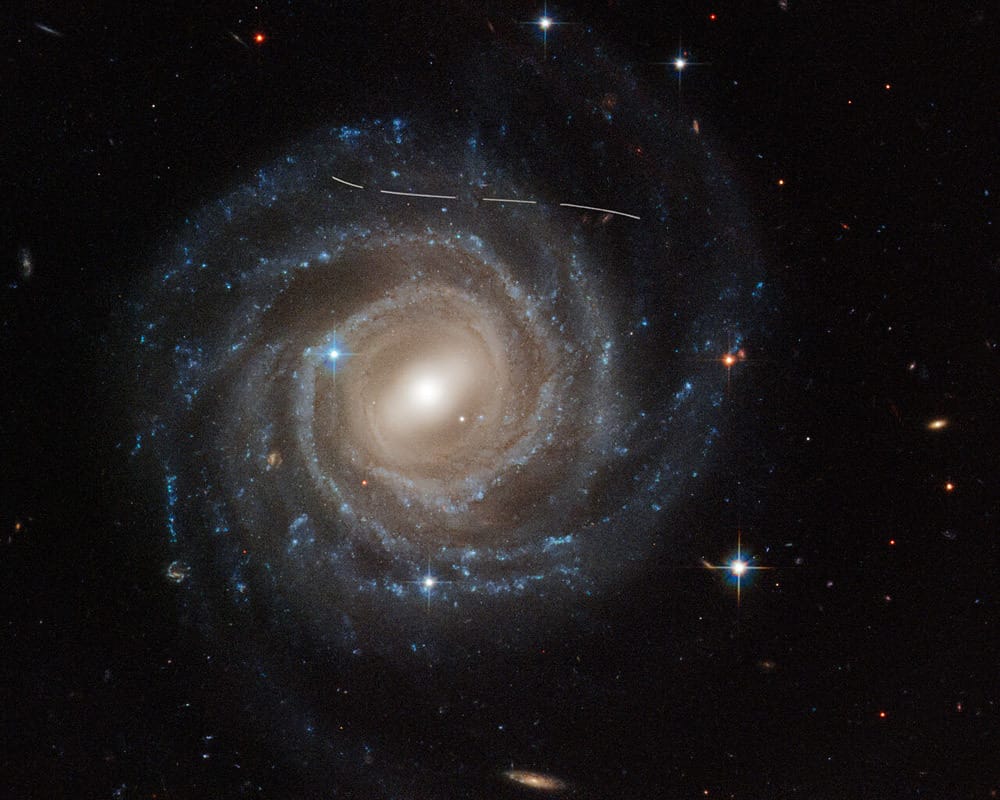- Bad Astronomy Newsletter
- Posts
- A wee asteroid came VERY close to us last week
A wee asteroid came VERY close to us last week
Plus, Rubin is going to find a lot more

The Trifid Nebula and environs. Credit: RubinObs/NOIRLab/SLAC/NSF/DOE/AURA
November 6, 2025 Issue #954
Teeny tiny asteroid breaks record for closest pass to Earth
It was only the size of a beachball, which itself is remarkable
Did you feel a slight breeze on October 30, 2025? At 12:11 UTC, a very small asteroid passed Earth by a mere 230 kilometers.
The asteroid, called 2025 UC11, was detected as a potential impactor by the Meerkat alert system just a few hours before. At first it looked like it had a very high probability of impact — 47%, a coin flip! — but followup observations taken immediately after dropped that chance to 0 very quickly. In the end, the rock passed over the planet just south of the southern tip of South America, skimming past Earth by only 2% of Earth’s diameter! Close.
In fact, it’s a record: this was the closest non-impacting pass by an asteroid ever seen. Closer ones happen all the time, of course, but these are from extremely tiny rocks. And of course even with somewhat bigger asteroids, some are never seen; they come in from the direction of the Sun, for example, making them extremely difficult to detect.
Had it hit it wouldn’t have been a huge deal. 2025 UC11 is less than a meter in width, somewhere between 40 and 90 centimeters: beachball sized. If it had come closer it would have experienced extreme pressure and heat as it slammed into our atmosphere, enough to tear it apart completely. It either would have vaporized, or rained down thousands of small meteorites after it exploded high above Earth’s surface. Either way it wasn’t a threat at all.

The orbit of 2025 UC 11 (white) is very similar to Earth’s, though tilted a bit from ours. Credit: NASA/JPL-Caltech
What’s amazing to me is that this thing was seen at all. A meter is small, so this rock was extremely faint. Despite that it was actually seen by quite a few observatories. The observations are sent to the Minor Planet Electronic Circular service, a clearing house of observations of asteroids and comets. Meerkat is an automated service by the European Space Agency which takes that data and makes predictions of where the asteroid will be, and sends out an alert if the probability of an Earth impact is high enough.
2025 UC11 was only discovered right before closest approach because it’s so small, but still, this shows that the system really worked well. In fact, most of the closest approaches we’ve seen have occurred in the past few years, showing just how much better we’re getting at spotting these. I wonder how much better this will get once the Vera Rubin Observatory goes online… anyway, I’m glad to see so much progress here!
Tip o’ the Whipple Shield to the wonderful Near-Earth Object Coordination Centre and their newsletter, which I read every month because it has interesting round ups of asteroid news.
Sometimes things change for the better
Science marches on
Speaking of the Rubin Observatory…
Back in 2010, the great astronomer Brian Marsden died. He was the keeper of all things asteroidal and cometary, running the Harvard-Smithsonian Minor Planet Center, still the repository of all information on every small solar system object categorized. I knew him, and when he passed away I wrote an article for Slate about him.
The story is about the time I found an asteroid in a series of images taken by STIS, a camera I worked on that had recently been installed on Hubble. At the time this was a novelty, and my friend Eliot Malumuth and I worked out that it was in the main asteroid belt, and probably about a kilometer across. I called Brian to report it, and to see if anyone could follow up. He asked how bright it was, and I said, “About magnitude 24.5”, which is incredibly faint; that’s why he literally laughed at me! There wasn’t any way to follow up on it, since the kind of big telescope needed for an observation like that was to busy doing more important work.

An asteroid photobombs an image of the galaxy UGC 12158, leaving behind a curved streak as it moves, and Hubble’s orbit changes its angle to it. Credit: NASA, ESA, P. G. Martín (Autonomous University of Madrid), J. DePasquale (STScI). Acknowledgment: A. Filippenko (University of California, Berkeley)
Why bring this up now? Because I just saw a paper published in The Astrophysical Journal about a project proposed for the Vera Rubin Observatory to look at up to 730 Kuiper Belt Objects: cometary objects that orbit the Sun out past Neptune. They’re asking for 30 hours of telescope time spread out over a year to see them all and get enough data to characterize their orbits.
How faint will they be able to go? Magnitude 27.5.
That’s 15 times fainter than our STIS asteroid, which we had no way to follow up on at the time.

Subscribe to Premium to read the rest.
Become a paying subscriber of Premium to get access to this post and other subscriber-only content.
Already a paying subscriber? Sign In.
A subscription gets you:
- • Three (3!) issues per week, not just one
- • Full access to the BAN archives
- • Leave comment on articles (ask questions, talk to other subscribers, etc.)

Reply